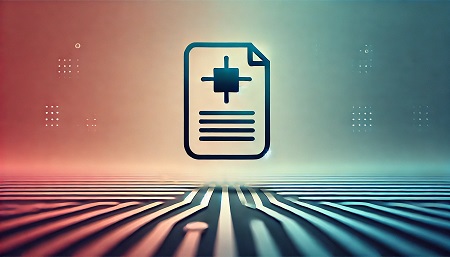
Introduction to Complexities of Electronic Health Record Implementation
Welcome to the digital age of healthcare where Electronic Health Records (EHRs) are revolutionizing the way patient information is stored and managed. In a world where technology drives efficiency and accuracy, implementing EHR systems has become essential for modern medical practices. Let’s dive into the complexities of EHR implementation, exploring both the benefits and challenges that come with this innovative shift in healthcare management.
Benefits of Electronic Health Record Implementation
Electronic Health Records (EHRs) offer a myriad of benefits for healthcare facilities and providers. One major advantage is the improved efficiency in accessing patient information. With EHRs, healthcare professionals can quickly retrieve vital medical data, leading to better decision-making and streamlined workflows.
Another benefit of implementing EHRs is enhanced communication among care teams. These systems enable real-time sharing of patient records, ensuring that all providers involved in a patient’s care are on the same page. This seamless collaboration ultimately results in more coordinated and comprehensive treatment plans.
Moreover, EHRs contribute to increased accuracy and reduced errors in clinical documentation. By eliminating handwritten notes and enabling standardized recording practices, EHRs help minimize mistakes that could jeopardize patient safety. Additionally, these digital records support evidence-based practices by providing valuable data for research and quality improvement initiatives.
The integration of Electronic Health Records brings numerous advantages that positively impact both healthcare delivery and patient outcomes.
Challenges in Implementing EHRs
Implementing Electronic Health Records (EHRs) in healthcare facilities comes with its set of challenges. One common hurdle is resistance from staff who are accustomed to traditional paper-based systems. Getting buy-in and ensuring proper training is crucial for a smooth transition.
Another challenge lies in the initial investment required for EHR implementation. Healthcare providers may face financial constraints when upgrading their systems, leading to delays or compromises in the quality of the EHR solution chosen.
Interoperability issues can also pose difficulties during EHR implementation. Ensuring that different systems can communicate and share data seamlessly is essential for providing comprehensive patient care across various departments and facilities.
Data security and privacy concerns add another layer of complexity to EHR implementation. Safeguarding sensitive patient information from cyber threats requires robust cybersecurity measures and ongoing monitoring to prevent breaches.
Navigating these challenges demands careful planning, adequate resources, and strong leadership support throughout the EHR implementation process.
Steps to Successfully Implement EHRs
Implementing Electronic Health Records (EHRs) can be a game-changer for healthcare organizations, but it requires careful planning and execution. The first step in the process is to assess the current workflow and identify areas where EHR implementation can streamline operations and improve efficiency.
Next, it’s crucial to select the right EHR system that aligns with the organization’s needs and goals. This involves researching different vendors, comparing features, and ensuring compatibility with existing systems.
Once a system is chosen, thorough training for staff is essential to ensure smooth integration. Training should be ongoing to address any issues that arise post-implementation.
Testing the EHR system before full deployment is vital to uncover any bugs or issues that need addressing. Pilot testing with a small group of users can help iron out any kinks before rolling out across the organization.
Regular monitoring and evaluation post-implementation are key to ensuring continued success. It’s important to solicit feedback from users and make adjustments as needed to optimize system usage and maximize benefits.
Training and Education for EHR Implementation
When it comes to implementing Electronic Health Records (EHRs), one crucial aspect that often gets overlooked is the training and education of healthcare staff. Properly educating employees on how to use EHR systems effectively can make a significant difference in the success of implementation.
Training sessions should be tailored to different roles within the organization, ensuring that each staff member receives instruction relevant to their responsibilities. Hands-on training with real-life scenarios can help employees grasp the functionalities of EHR systems more efficiently.
Moreover, ongoing support and refresher courses are essential to keep everyone up-to-date with any system updates or changes. Encouraging open communication and feedback from staff during the training process can also help address any issues or concerns early on.
By investing time and resources into comprehensive training programs, healthcare organizations can set their teams up for success when transitioning to EHR systems.
Utilizing EHRs for Patient Care and Management
In the realm of healthcare, Electronic Health Records (EHRs) play a pivotal role in revolutionizing patient care and management. By digitizing medical records, healthcare providers can access comprehensive patient information at their fingertips, leading to more informed decision-making.
With EHR systems, healthcare professionals can streamline processes such as scheduling appointments, ordering tests, and managing prescriptions. This efficiency not only saves time but also enhances the overall quality of care delivered to patients.
Moreover, EHRs facilitate better communication among different members of the healthcare team. From physicians to nurses to specialists, everyone involved in a patient’s care can easily collaborate and coordinate treatment plans through electronic platforms.
Additionally, by utilizing EHRs for patient care and management, clinicians can track trends in health data over time. This longitudinal view enables proactive interventions and personalized treatment strategies tailored to each individual’s needs.
Ensuring Data Security and Privacy with EHR Systems
When it comes to Electronic Health Record (EHR) implementation, ensuring data security and privacy is paramount. EHR systems house sensitive patient information that must be protected from unauthorized access or breaches.
One crucial aspect of safeguarding data within EHR systems is encryption. Encrypting data ensures that even if there’s a breach, the information remains unintelligible to unauthorized individuals. Regularly updating security protocols and software patches is also essential in fortifying the system against evolving cyber threats.
Access controls play a vital role in maintaining data security within EHR systems. Implementing stringent access controls limits who can view or modify patient records, reducing the risk of internal breaches.
Regular training on cybersecurity best practices for healthcare staff involved in using EHR systems can help bolster overall data security measures. Additionally, conducting routine audits and assessments can identify vulnerabilities that need to be addressed promptly.
By prioritizing data security and privacy measures within EHR implementation, healthcare organizations can instill trust among patients while complying with regulatory requirements such as HIPAA.
Conclusion: The Importance of Proper Planning and Resources for Successful EHR Implementation
Electronic Health Records (EHR) have revolutionized the way healthcare providers manage patient information, streamline processes, and enhance patient care. Implementing EHR systems can be a complex undertaking with various benefits and challenges. To ensure successful implementation, it is crucial to prioritize proper planning, allocate sufficient resources, provide adequate training for staff, focus on data security and privacy measures, and effectively utilize EHRs for improved patient care.
By investing time and effort in the initial stages of planning and preparation, healthcare facilities can avoid common pitfalls associated with EHR implementation. With a clear roadmap in place and a dedicated team overseeing the process, organizations can navigate through complexities more smoothly.
Remember that implementing EHR systems is not just about adopting new technology; it’s also about transforming workflows to optimize efficiency while maintaining high standards of patient care. With careful consideration of all aspects involved in EHR implementation, healthcare providers can maximize the benefits these systems offer while minimizing disruption to daily operations.
In conclusion: Successful EHR implementation requires strategic planning, ongoing support from stakeholders, continuous education for staff members, robust data security protocols, and a commitment to leveraging EHR technology for enhanced patient outcomes. By focusing on these key areas and addressing challenges proactively throughout the process, healthcare organizations can achieve seamless integration of electronic health records into their practice.



Площадка BlackSprut — это довольно популярная онлайн-площадок в darknet-среде, предоставляющая разнообразные сервисы для всех, кто интересуется сетью.
На платформе реализована простая структура, а структура меню не вызывает затруднений.
Пользователи отмечают стабильность работы и жизнь на площадке.
bs2best
BlackSprut ориентирован на приватность и безопасность при работе.
Тех, кто изучает инфраструктуру darknet, этот проект станет интересным вариантом.
Перед началом лучше ознакомиться с основы сетевой безопасности.